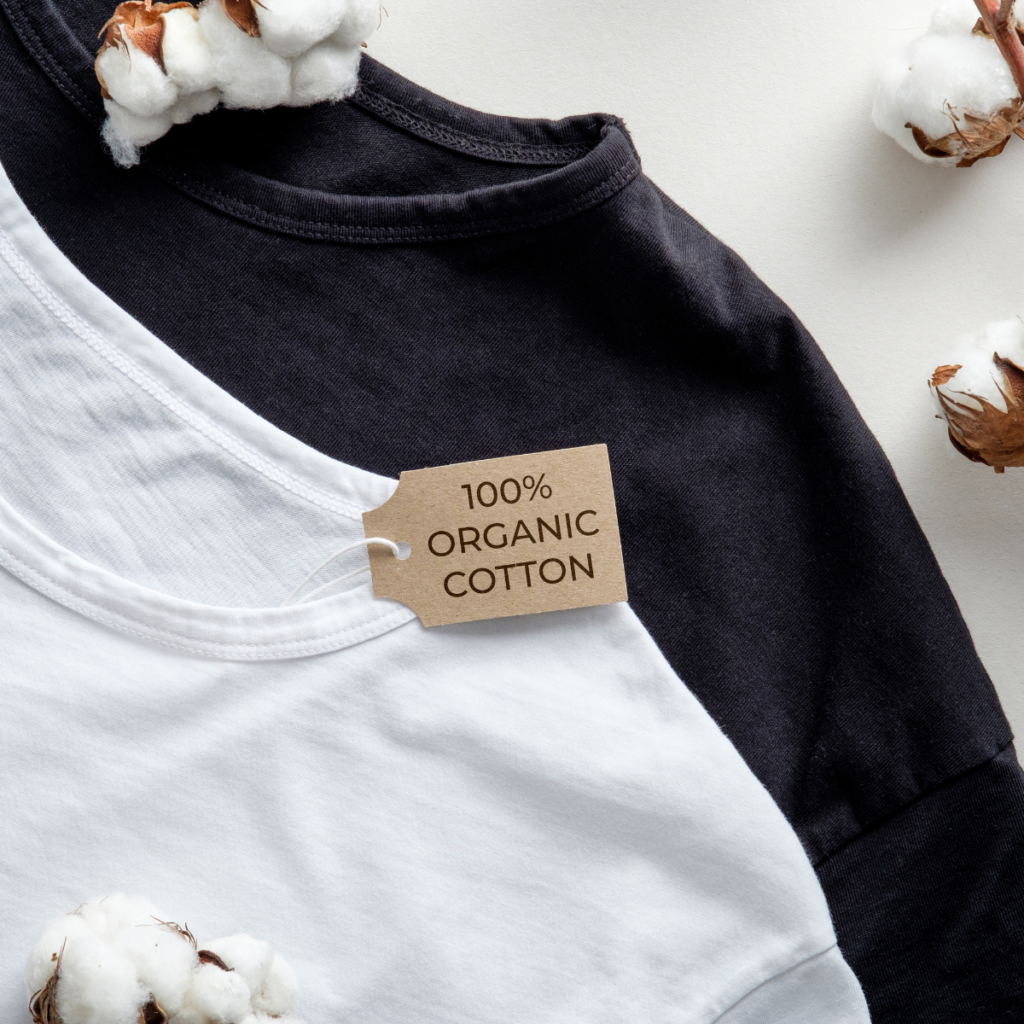What is Sustainable Fashion? A Guide to Eco-Friendly Style
Ready to upgrade your wardrobe while doing your part for the planet? Discover the world of sustainable fashion and eco-friendly style. From slow fashion to upcycling, it is possible to make a stylish but sustainable statement.
Sustainable fashion, ethical fashion, and slow fashion. You’ve probably heard these terms many times. Celebrities are spotted wearing romantic, sultry, and vampy looks created solely with eco-friendly fabrics. Sustainable fashion influencers have been donning comfy casual upcycled attires to minimize the environmental impact of their wardrobes.
The goal? To promote conscious consumerism instead of fast fashion. Because the alluring $5 price tag comes at a huge cost to the lives of the workers who craft the clothes, as well as the environment.
But what is sustainable fashion, after all? What is the environmental impact of fast fashion? Is budget-friendly sustainability attainable?
What is Sustainable Fashion?
Strictly speaking, the Collins English dictionary defines the term “sustainability” as “the avoidance of the depletion of natural resources to maintain an ecological balance.” Therefore, sustainable fashion is an umbrella term for clothing, footwear, and accessories produced in an environmentally and socially responsible manner.
The sole aim is to effectively minimize the fashion industry’s negative impact on the planet and society by creating closet staples that can be, quite literally, sustained while protecting both the environment and those producing garments. Making moves to sustainable fashion is a key element of living more sustainably.

The eco-friendly style also speaks to longevity. According to the International Fair Claims Guide for Consumers Textiles Products, assuming normal wear, you can expect most of your clothes to last somewhere between two and three years. However, the average US consumer throws away 81.5 pounds of clothes every year, according to the EPA.
Sustainable fashion addresses these issues by promoting ethical and sustainable practices throughout the supply chain, from sourcing raw materials to production, distribution, and disposal. That’s the reason why lowering CO2 emissions, promoting conscious consumerism, tackling overproduction, reducing pollution, and ensuring that garment workers are paid fairly, are all crucial to the slow fashion sphere.
The Environmental Impact of Fast Fashion
With the fashion industry responsible for a shocking four to 10 percent of global greenhouse-gas emissions every year — a number that will likely double by the end of the decade — it’s safe to say that our sartorial purchases come with hidden environmental tax.
Fast Fashion Waste
Fashion is one of the largest contributors to pollution and waste. It relies heavily on non-renewable resources, produces a significant amount of greenhouse gases, and generates large amounts of waste and toxic chemicals.
To put this into perspective, 100 billion garments are produced yearly, and 92 million tons end up in landfills. This is the equivalent of a rubbish truck full of clothes ending up on landfill sites every second. Moreover, the amount of fast fashion waste is expected to skyrocket to 134 million tons a year by the decade’s end.
The never-ending circle of fads leaves no room for conscious consumerism. Today, most clothes are worn only seven to 10 times before being tossed. The number of times a garment is worn has declined by around 36 percent in 15 years.
The Environmental Impact of Synthetic Fabrics
If we zoom in to fast fashion’s most used fabrics, the picture will be even grimmer. It takes 20,000 liters of water to produce one kilogram of cotton. So for just one t-shirt, 2,700 liters of water are spent. This is enough for one person to drink for 900 days. If cotton isn’t involved, nylon and polyester take the front seat.

These man-made fabrics are a huge source of microplastics. With each wash and dry cycle, a tsunami of tiny plastic fibers moves through our sewage systems and ends up in waterways. It is estimated that half a million tons of microplastics reach the ocean each year.
Modern-Day Slavery
Many workers in fast fashion factories, often single moms and youth, are forced to work overtime under dangerous conditions, all while being paid very low wages, often well below a living wage. In fact, “93 percent of brands surveyed by the Fashion Checker aren’t paying garment workers a living wage.”
Ethical Considerations in Sustainable Fashion
Unlike the inhumane and extremely polluting business model of fast fashion, ethical fashion prioritizes fair labor practices throughout its supply chain. This includes ensuring workers are paid a living wage, have safe working conditions, and are not subject to exploitation or forced labor.
Sustainable fashion also focuses on social justice, including gender equality, diversity, and inclusivity. This means working with suppliers and partners who share these values and treating all workers and stakeholders with respect and dignity.
Contrary to fast fashion brands, ethical fashion companies are transparent about their environmental impact, practices, and policies, including their supply chain and manufacturing processes. They also hold themselves accountable for any negative impact they may have on people, the Local economies, or the environment.
Moreover, eco-conscious brands proudly adopt a circular economy approach, where products are designed to be reused, repurposed, or recycled, minimizing waste and reducing the need for new resources.
The Benefits of Sustainable Fashion
Sustainable fashion uses eco-friendly fabrics and production methods, reducing the impact of the fashion industry on the environment. This includes using recycled or upcycled materials, reducing waste, and minimizing water and energy consumption. Organic fibers, for example, are made with fewer chemicals, require less water for processing, and generate fewer greenhouse gas emissions.

While fast fashion takes a toll on the local economies, sustainable fashion brands support small-scale producers and artisans, promoting traditional crafts and techniques and creating jobs and economic opportunities.
Sustainable fashion often focuses on quality over quantity, creating unique and high-quality products designed to last. This conscious consumerism can lead to a more sustainable and fulfilling approach to fashion consumption, where people value and cherish their clothing and accessories for longer.
How to Shop Sustainably and Affordably
Buy less: Minimalism is a sartorial mentality that helps us strip back the unnecessary, leaving only the things that provide us with real value. So before you purchase, ask yourself, “What am I buying and why? Do I really need this in my wardrobe? Will I wear it at least 30 times?”
Invest In Sustainable Brands
By investing in fewer, higher-quality items made with eco-friendly materials and production methods, you’ll reduce the need for frequent replacements and ultimately reduce waste. While sustainable clothes may initially have a higher price tag, they are often more cost-effective in the long run due to their higher quality and durability. Fast fashion, on the other hand, may have a lower upfront cost but can cost more in the long run due to frequent replacements.
Shop Secondhand
Sustainable fashion influencers and granola girls prove every day that secondhand, eco-friendly style is the new cool-girl thing to do. Thrift stores, consignment shops, and budget-friendly online marketplaces like Poshmark and Depop are great places to find gently used clothing at a fraction of the cost of new items. You can also find vintage and retro pieces that add a unique flair to your wardrobe.
Rent Clothes
Instead of buying a brand-new dress for that wedding this spring, why not rent it instead? Services like Rent the Runway and Le Tote allow you to rent designer clothing for a fraction of the cost of buying. This is a great option for special occasions or when you want to try out a new trend without committing to a purchase.
Know Your Materials
Cheap, synthetic materials make up 55 percent of clothes globally. Sustainable fashion aims to help us invest in a few high-quality pieces that are made to last. Look for well-made items that use sustainable materials like organic cotton, hemp, or recycled fabrics. These materials are not only strong and durable but also use significantly less water and are free of chemicals.
Tips For Taking Care of Your Clothes
Even the most premium-quality garments will eventually lose the battle when neglected or mistreated.
Make sure to check the care label on your clothing and follow the recommended instructions for washing, drying, and ironing. This will help to prevent damage and maintain the quality and durability of your clothes.
Having a squeaky-clean OOTD is certainly important. However, washing clothes too frequently can cause them to wear out more quickly. Try to wear clothes multiple times before washing them, and spot-clean any stains or spills to avoid unnecessary washing.

When it’s laundry day, use an eco-friendly laundry detergent that is gentle on your clothes and the environment. Harsh detergents can cause damage to fibers and contribute to pollution.
Washing clothes in cold water can help to conserve energy and prevent damage to fabrics. Hot water can cause shrinkage and fading and is unnecessary for most types of clothing.
The air-drying method will forever be sustainable fashion’s best friend. Instead of using a dryer, air dry your clothes by hanging them on a drying rack or clothesline. This can help to prevent shrinkage and damage caused by heat.
Lastly, if you spot any small tears or holes, consider repairing them instead of discarding them. This can help to extend the life of your clothes and reduce waste.
With joint forces, we can combat excessive consumerism and fast fashion and help minimize the destructive impact it has on our local communities and the planet. “Reduce, Rewear, Recycle, Repair, Resell.” That’s the only way to change the perception of the lifespan of the garments we buy. Sustainable fashion is here for us to choose the purchase we know we can feel good about. Of course, the first step towards sartorial sustainability is only buying what you need!
This article first appeared on Food Drink Life.

